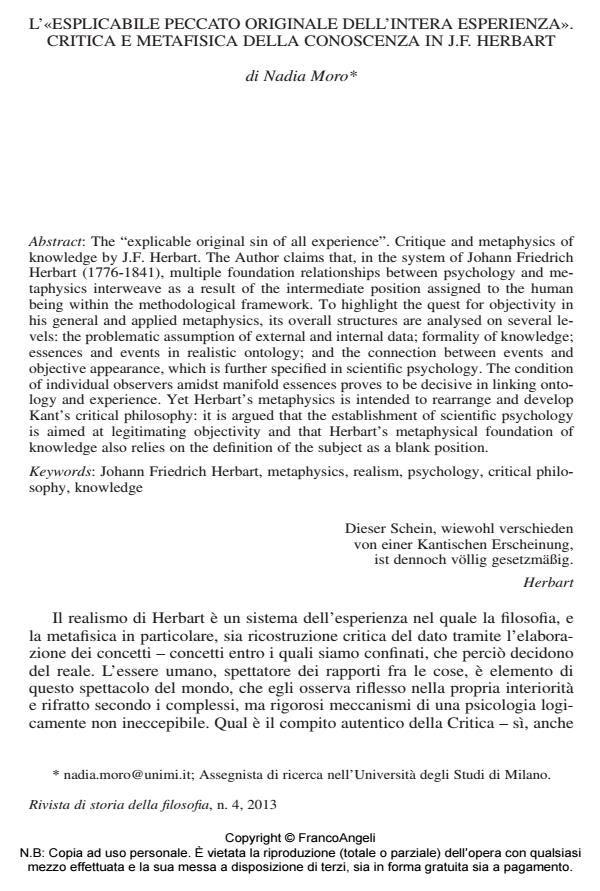L’"esplicabile peccato originale dell’intera esperienz"». Critica e metafisica della conoscenza in J.F. Herbart
Journal title RIVISTA DI STORIA DELLA FILOSOFIA
Author/s Nadia Moro
Publishing Year 2013 Issue 2013/4
Language Italian Pages 25 P. 673-697 File size 521 KB
DOI 10.3280/SF2013-004002
DOI is like a bar code for intellectual property: to have more infomation
click here
Below, you can see the article first page
If you want to buy this article in PDF format, you can do it, following the instructions to buy download credits

FrancoAngeli is member of Publishers International Linking Association, Inc (PILA), a not-for-profit association which run the CrossRef service enabling links to and from online scholarly content.
The "explicable original sin of all experience". Critique and metaphysics of knowledge by J.F. Herbart. The Author claims that, in the system of Johann Friedrich Herbart (1776-1841), multiple foundation relationships between psychology and metaphysics interweave as a result of the intermediate position assigned to the human being within the methodological framework. To highlight the quest for objectivity in his general and applied metaphysics, its overall structures are analysed on several levels: the problematic assumption of external and internal data; formality of knowledge; essences and events in realistic ontology; and the connection between events and objective appearance, which is further specified in scientific psychology. The condition of individual observers amidst manifold essences proves to be decisive in linking ontology and experience. Yet Herbart’s metaphysics is intended to rearrange and develop Kant’s critical philosophy: it is argued that the establishment of scientific psychology is aimed at legitimating objectivity and that Herbart’s metaphysical foundation of knowledge also relies on the definition of the subject as a blank position.
Keywords: Johann Friedrich Herbart, metaphysics, realism, psychology, critical philosophy, knowledge
Nadia Moro, L’"esplicabile peccato originale dell’intera esperienz"». Critica e metafisica della conoscenza in J.F. Herbart in "RIVISTA DI STORIA DELLA FILOSOFIA" 4/2013, pp 673-697, DOI: 10.3280/SF2013-004002